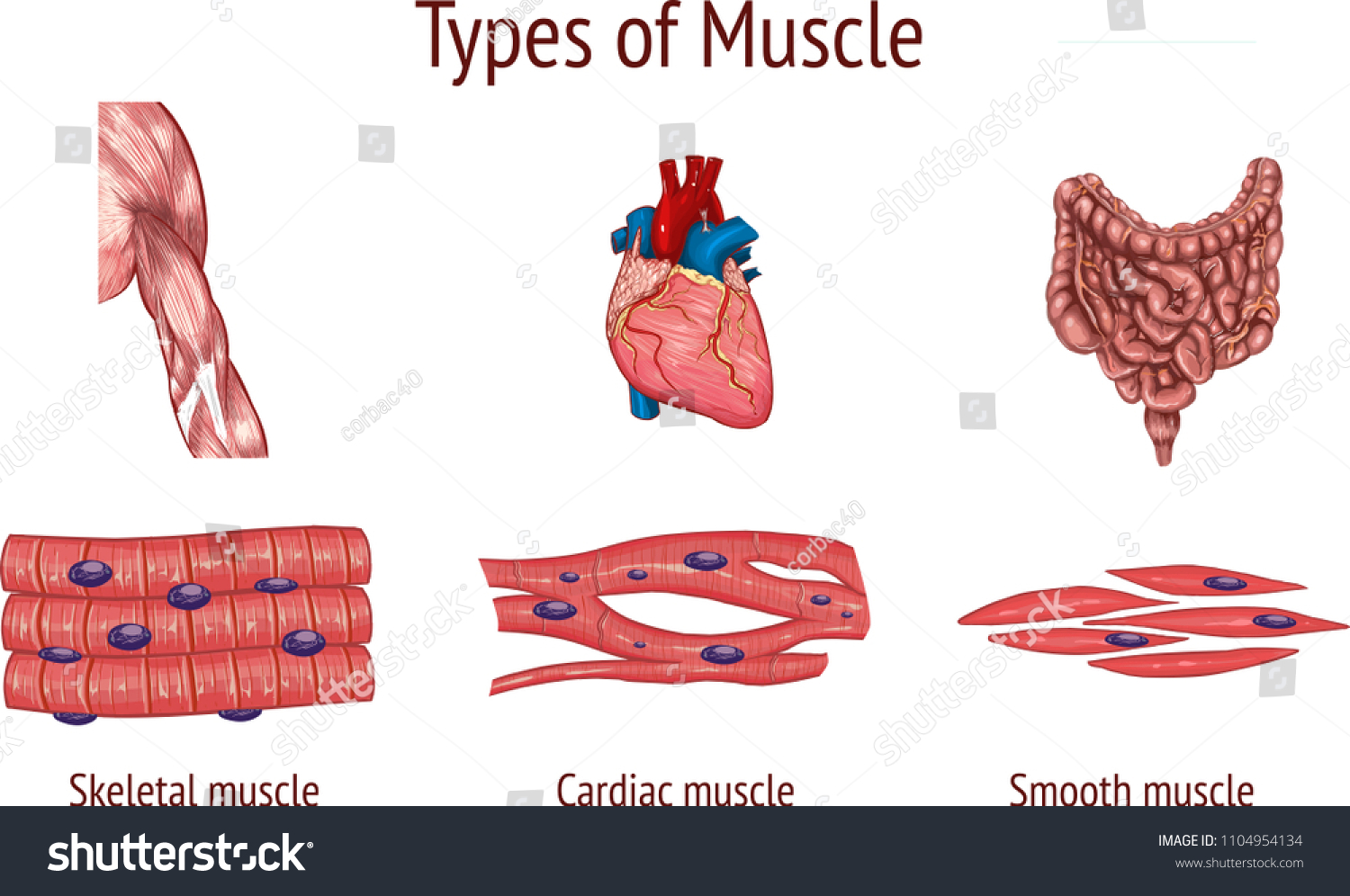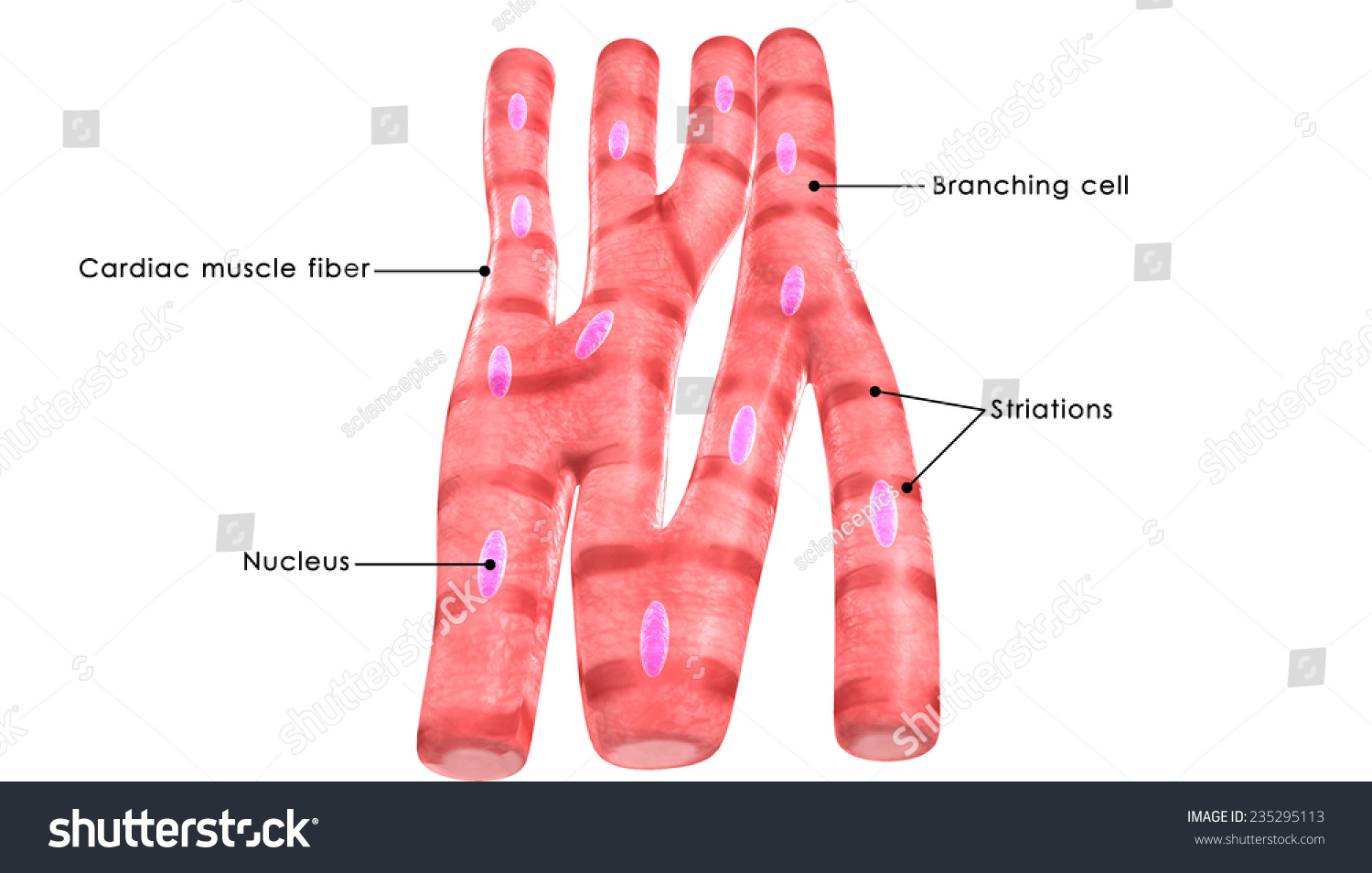Introduction
Tissues in the body that produce movement and maintain posture are muscles. Muscle fibers are specialized cells that contract and relax to move, and make up the body structure. Muscles are made up of protein fibers and are highly organized structures. The protein fibers are organized into myofibrils, which contain contractile proteins, such as actin and myosin. When an action potential reaches the muscle fiber, it triggers the interaction between actin and myosin, leading to muscle contraction and movement.
There are on the basis of function divided into three main types in the human body:
- Skeletal muscle
- Smooth muscle
- Cardiac muscle

Skeletal muscle
- Involuntary movement is controlled by skeletal muscle, a type of muscle that is linked to bones. It is under conscious control and can be contracted or relaxed intentionally. Skeletal muscles contract and relax in pairs to move the body; one muscle contracts to move in one direction while the other relaxes to move in the opposite way.
- Skeletal muscle fibers are long, cylindrical cells that are packed with protein filaments, including actin and myosin, which are responsible for muscle contraction. The muscle fibers are organized into fascicles, which are surrounded by connective tissue, including tendons and fascia.
- When nerve impulses reach skeletal muscle fibers, they send signals that cause the release of an enzyme called acetylcholine at the neuromuscular junction. This substance causes movement by telling the muscle fibers to contract. The strength of the muscle contraction can be controlled by the amount of acetylcholine released and the frequency of nerve impulses.
Smooth muscle
- The walls of internal organs like the esophagus, stomach, intestines, and bladder contain smooth muscle, a type of muscle. Smooth muscle does not require conscious control to contract; rather, it does so naturally in response to stimuli.
- They are shorter and thicker than skeletal muscle fibers, and they lack the well-defined structure of skeletal muscle. They are arranged in sheets or layers in the walls of internal organs and are responsible for controlling the movements of these organs.
- The contraction of smooth muscle is triggered by nerve impulses, hormones, or other chemical signals. Unlike skeletal muscle, the contraction of smooth muscle is slow and sustained, allowing it to maintain pressure or propulsion over a long period.
- Smooth muscle plays a critical role in many of the body’s functions, including digestion, urination, and reproduction. In the digestive system, smooth muscle contractions move food through the esophagus and intestines, while in the urinary system, smooth muscle contractions control the flow of urine.
The Cardiac muscles
- The heart constitutes cardiac muscle. It is in charge of moving blood around the body, and it has a unique structure and function compared to skeletal and smooth muscle.
- Cardiac muscle fibers are similar to skeletal muscle fibers in that they are striated, meaning they have alternating light and dark bands. However, unlike skeletal muscle, cardiac muscle fibers are joined together by intercalated discs, which contain specialized proteins that allow for the rapid transfer of electrical signals from one muscle cell to the next.
- These rapid electrical signals allow the heart to contract in a coordinated manner, producing a strong, synchronized beat. The contraction of cardiac muscle is controlled by the (SA) node, acting as the heart’s natural pacemaker, generating regular electrical impulses that spread throughout the heart, triggering contraction.
- Cardiac muscle has a unique metabolism, relying primarily on the oxidation of fatty acids for energy. This high-energy metabolism allows the heart to contract continuously and efficiently, pumping blood throughout the body.

Functions of muscles
Muscles play a critical role in the human body, serving many different functions. Some of the main functions of muscles include:
- Movement: Muscles are responsible for moving by contracting and relaxing. The contraction of muscles causes bones to move, resulting in a wide range of movements, including walking, running, jumping, and lifting.
- Support: Muscles provide support for the skeleton and help maintain posture. By contracting and relaxing in response to changes in body position, muscles keep the body upright and stable.
- Heat Generation: Contracting muscles generate heat, which helps maintain body temperature. During intense exercise, muscle contractions can generate significant amounts of heat, helping to raise the body’s temperature.
- Respiration: To regulate the movement of air into and out of the lungs, the diaphragm and intercostal muscles must contract and relax to breathe.
- Digestion: In order to convey food through the esophagus and intestines and aid in the breakdown of food and the absorption of nutrients, smooth muscle in the walls of the digestive system contracts.
- Urination and Defecation: Smooth muscle in the urinary and digestive systems contracts to control the flow of urine and feces.
- Reproduction: Smooth muscle in the reproductive system contracts to move sperm and transport the fetus during pregnancy.
- Circulation: Cardiac muscle contracts to pump blood through the body, providing oxygen and nutrients to all the cells and tissues.
Conclusion
The elastic tissues are made up of thousands of muscle fibers. There are more than 600 muscles in the human body. The skeletal system, smooth muscle, and heart muscles are the three main categories of muscles. While cardiac muscle pumps blood throughout the body, smooth muscle regulates the movements of internal organs and skeletal muscle is in charge of voluntary movement.
Frequently Asked Questions
1. What are Striated muscles?
Striated muscles, also known as skeletal muscles, are a type of muscle found in the human body. They are called “striated” because they have a distinctive striped or banded appearance, visible under a microscope.
2. Give three features of cardiac muscles.
Cardiac muscles have the following characteristics:
(1) They are cylindrical, branching, and uninucleated;
(2) They are made of striated muscle fibers.
(3) We are unable to regulate our involuntary muscles.
3. What is myoglobin?
A protein called myoglobin is present in both cardiac and skeletal muscles. It functions as an oxygen reservoir and gives the muscles oxygen.
 Mission Statement
Mission Statement
“Empower every student to achieve full potential”
88Guru has been established with the social objective of making quality video-based learning material available to all Indian students. Technology, Connectivity and Social Media are rapidly changing the world of Education and we wish to lead the transformation of the tuition industry in India.
88Guru is the perfect complement to the current tuition model. 88Guru creates a wonderful opportunity for children and parents to bond while engaging in a valuable learning activity. It also provides the complete curriculum at your fingertips for those moments when you need some help at short notice. We believe that this mode of tuition could be transformational, adding hours to a child's day while providing complete control over the learning process.
Every course is taught by the best teachers from India's top schools and conducted in an engaging manner to keep students involved. The e-learning process consists of video-based instructions, computer-graded assignments, and a dashboard which allows the student and parent to track progress.


